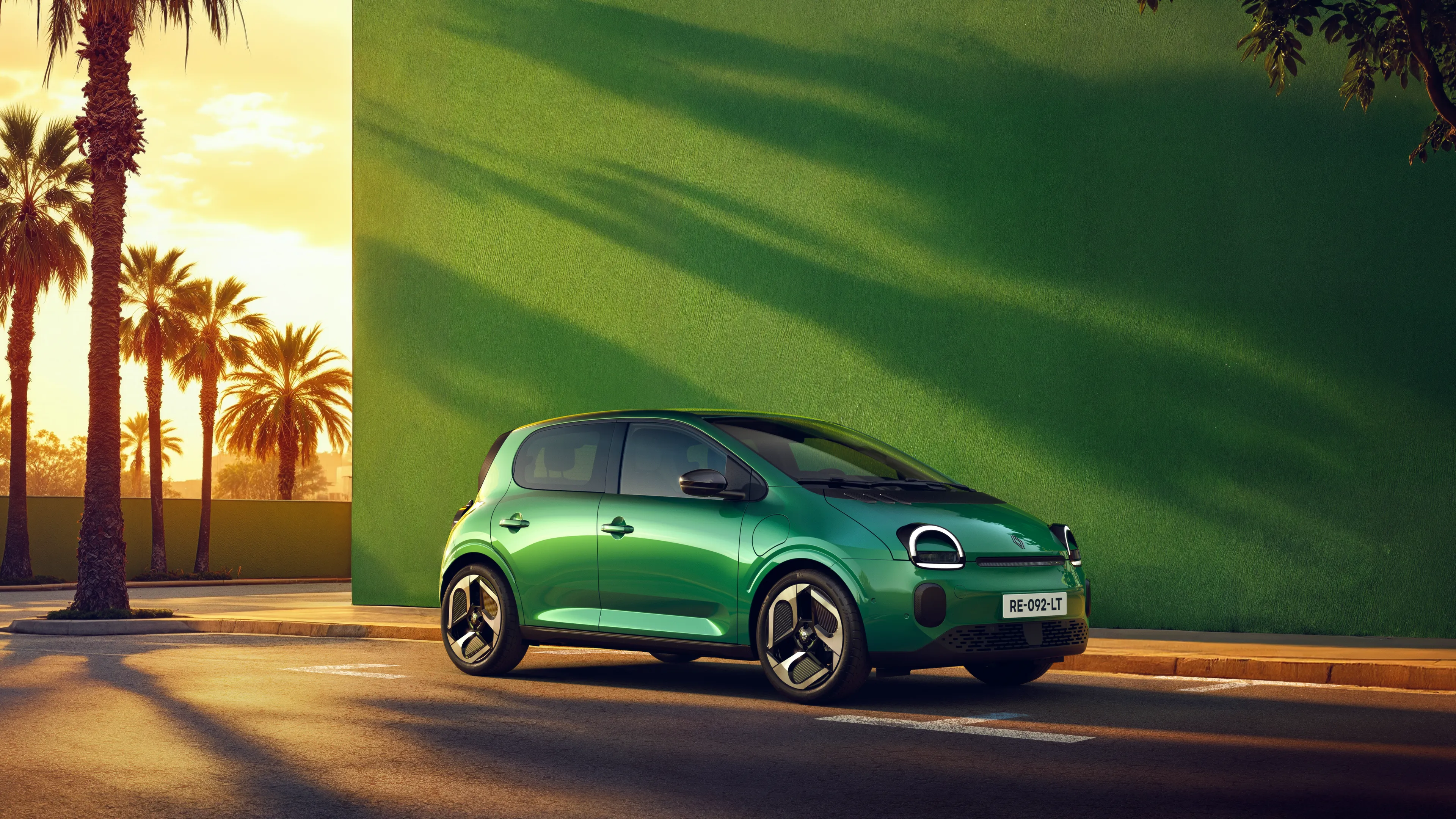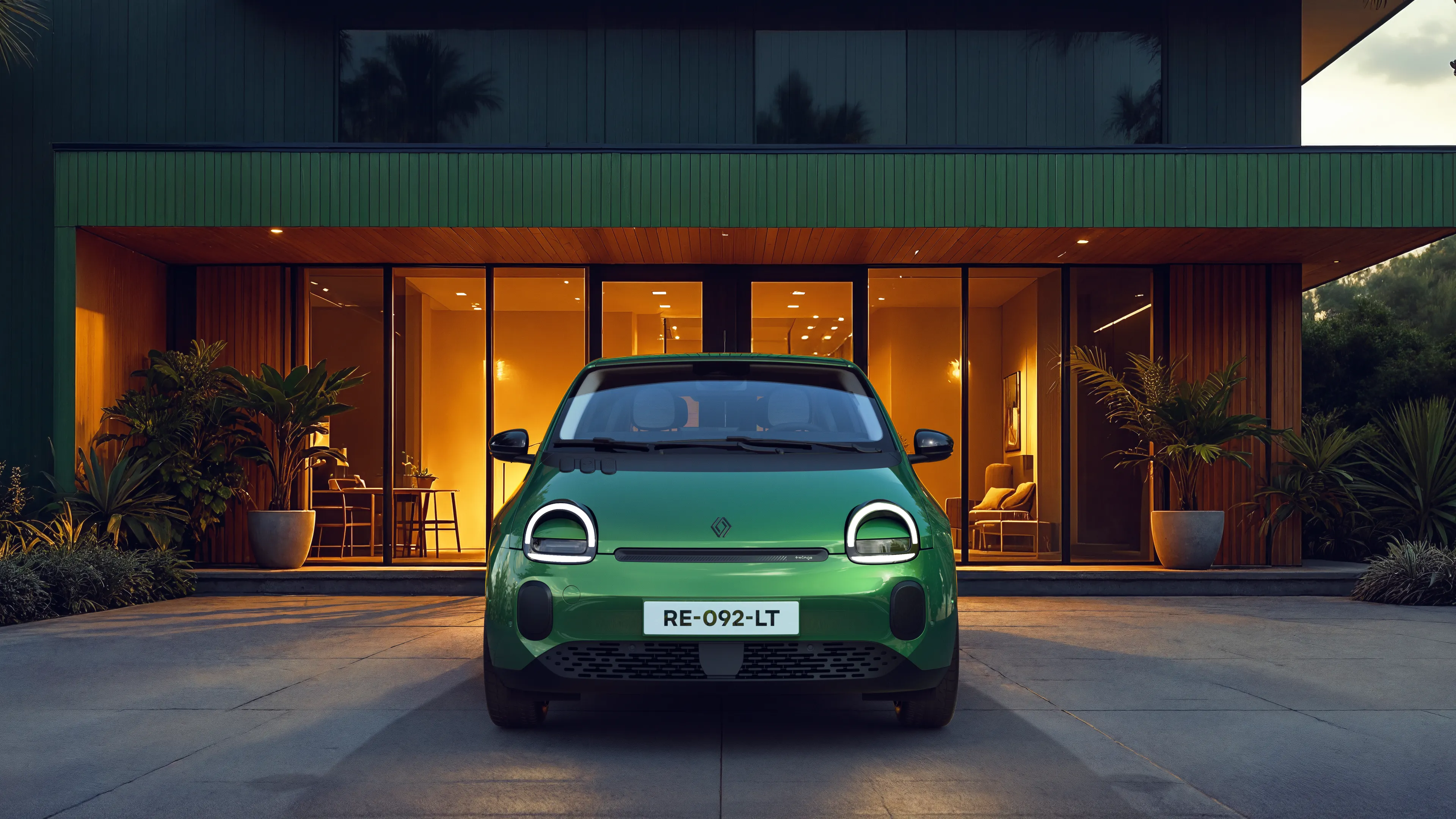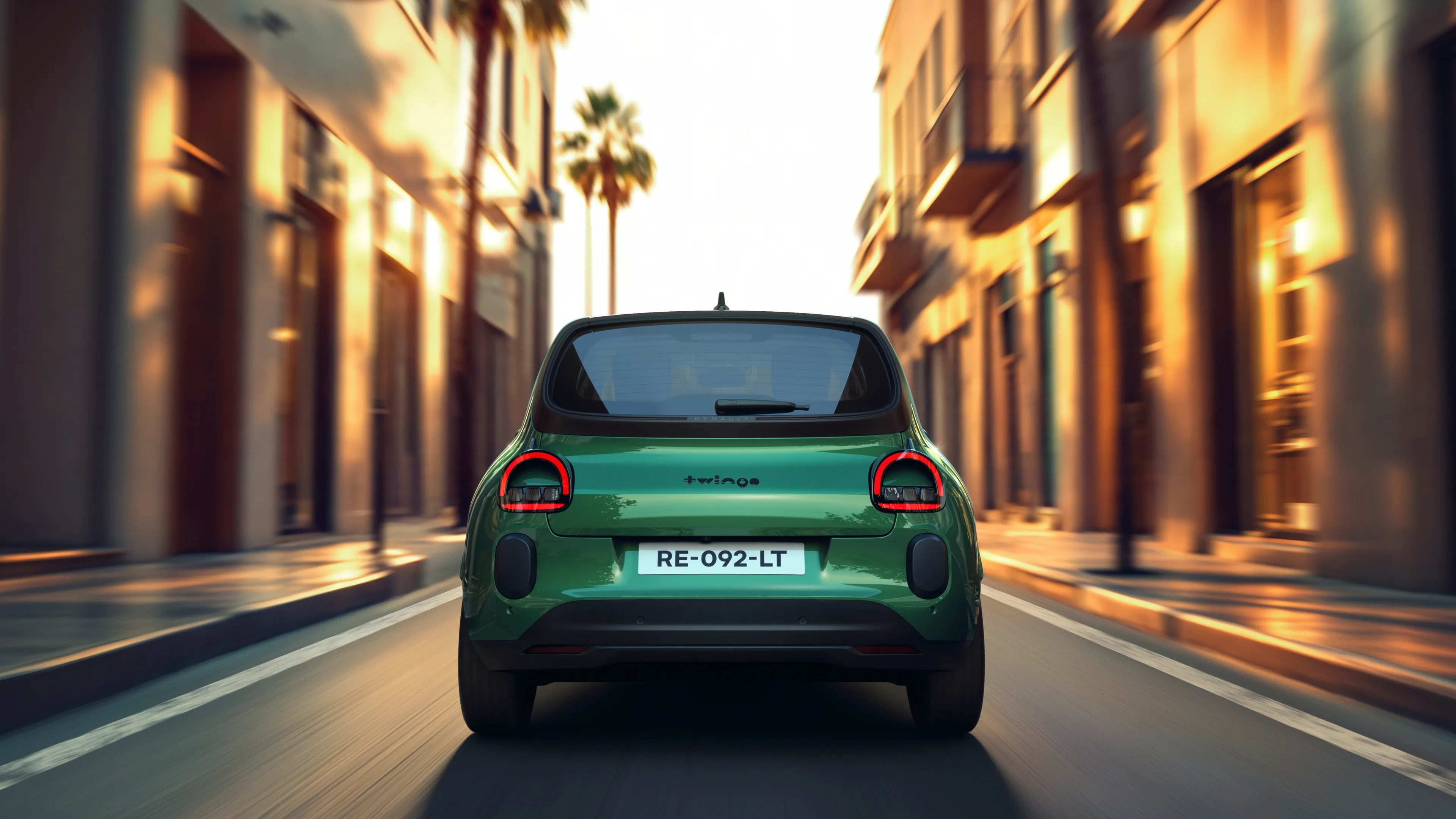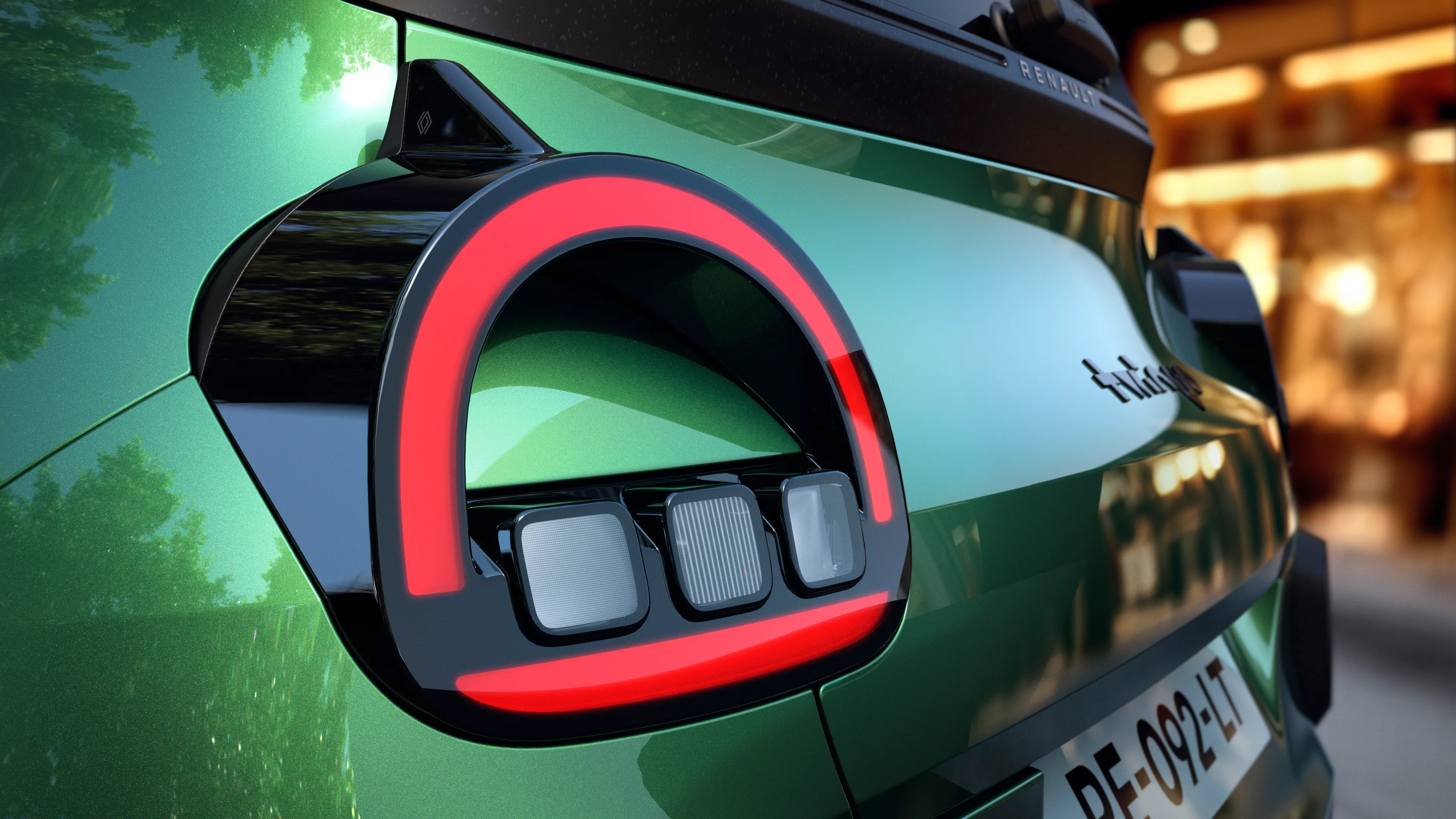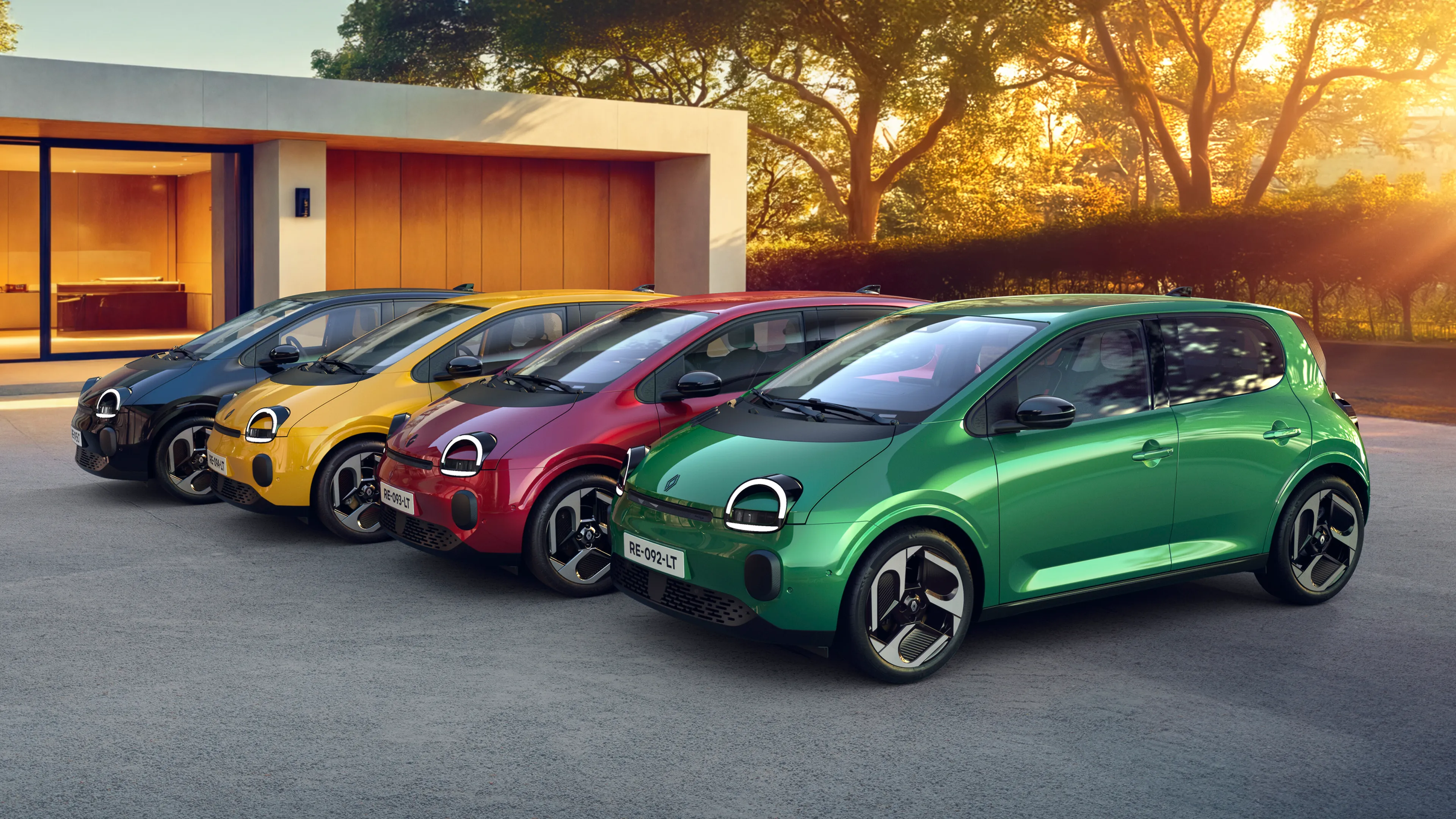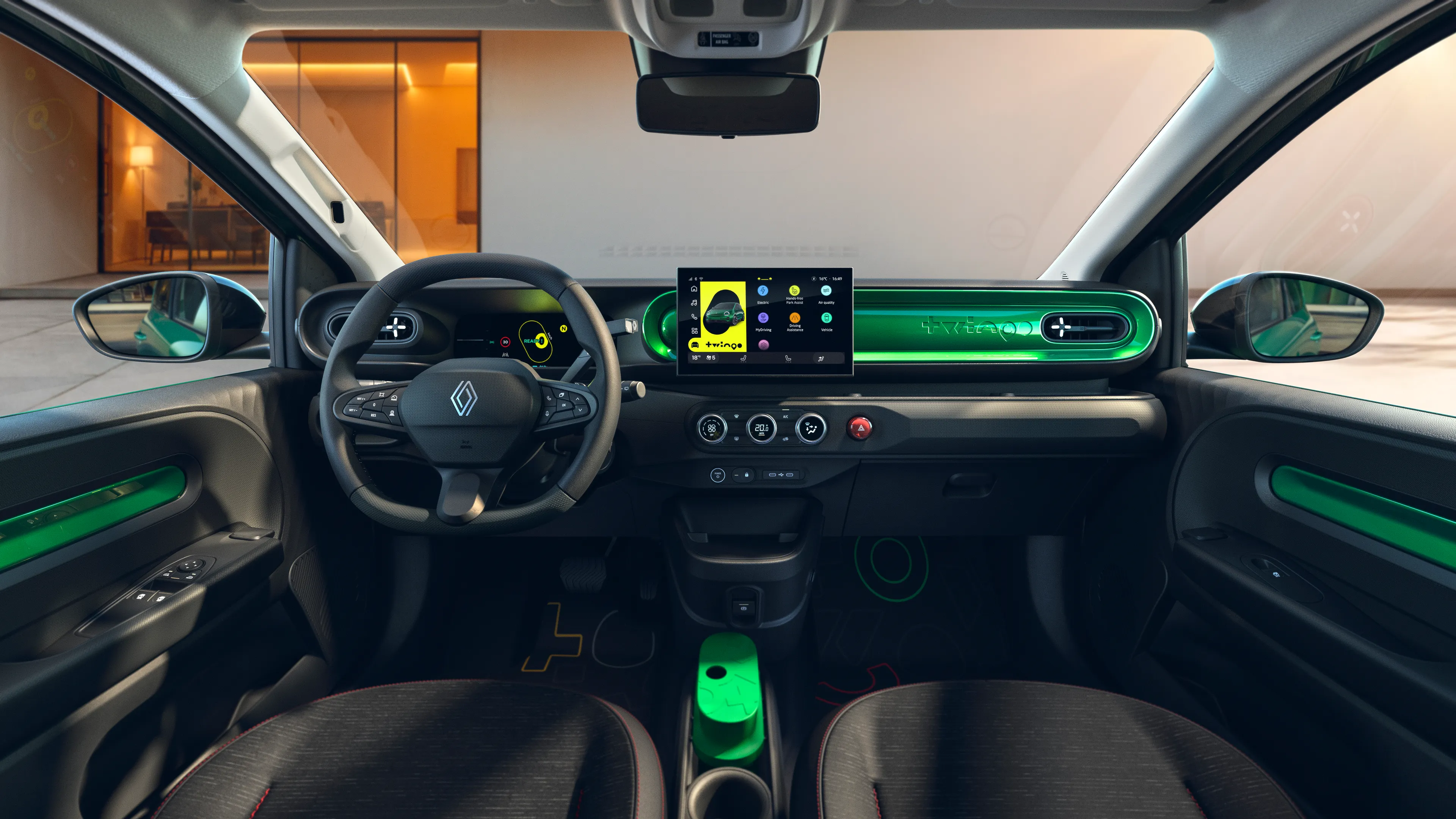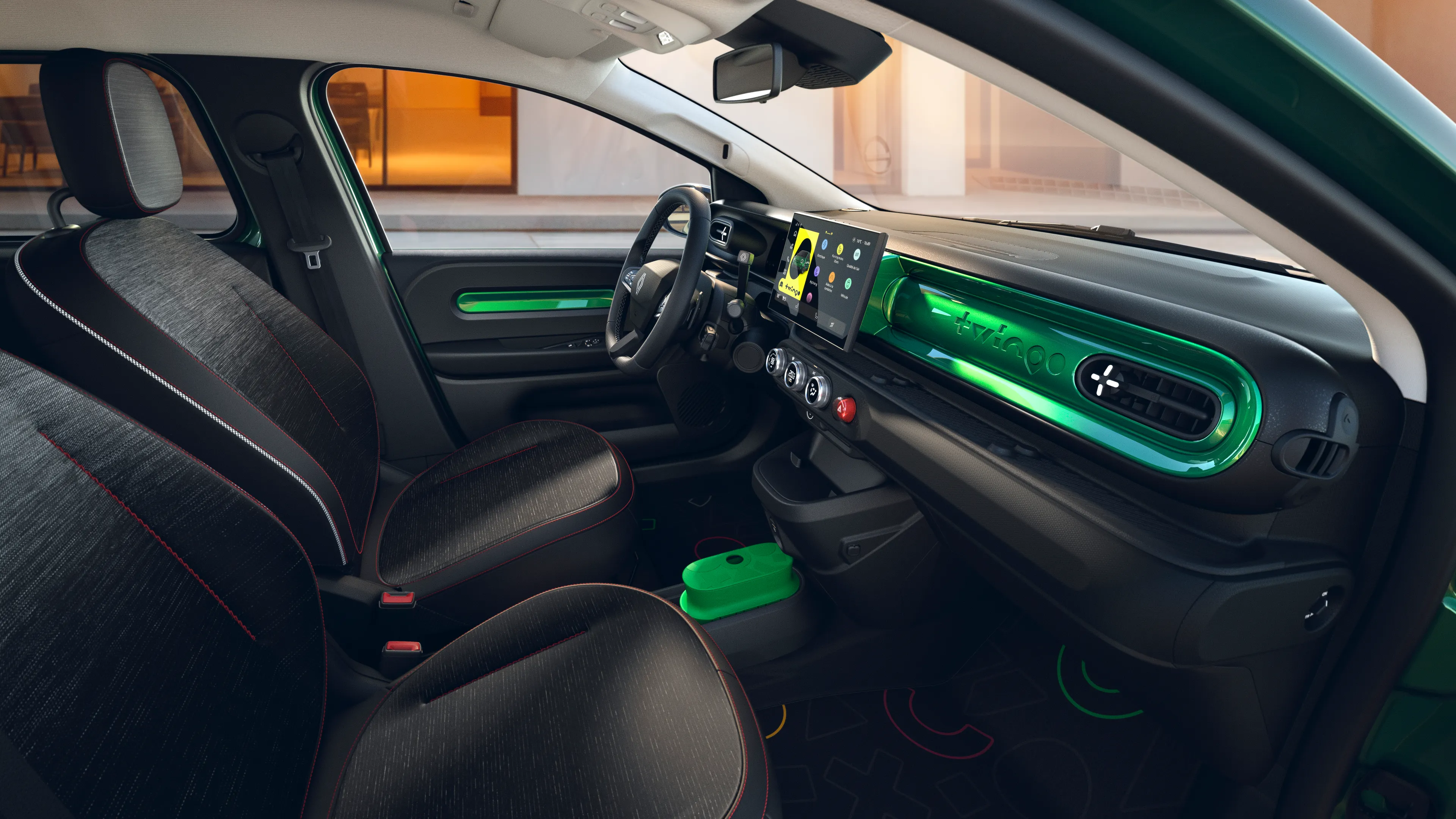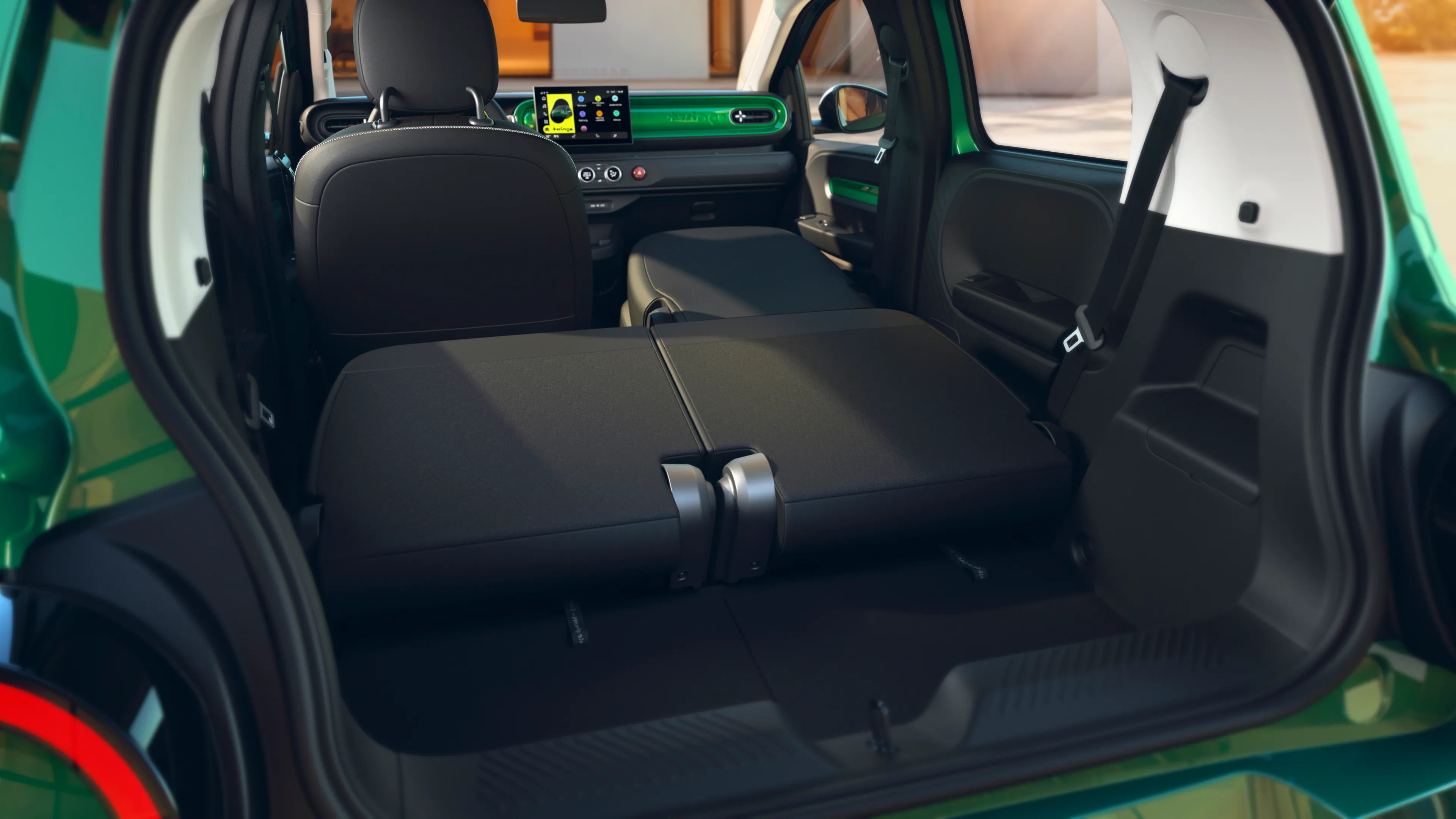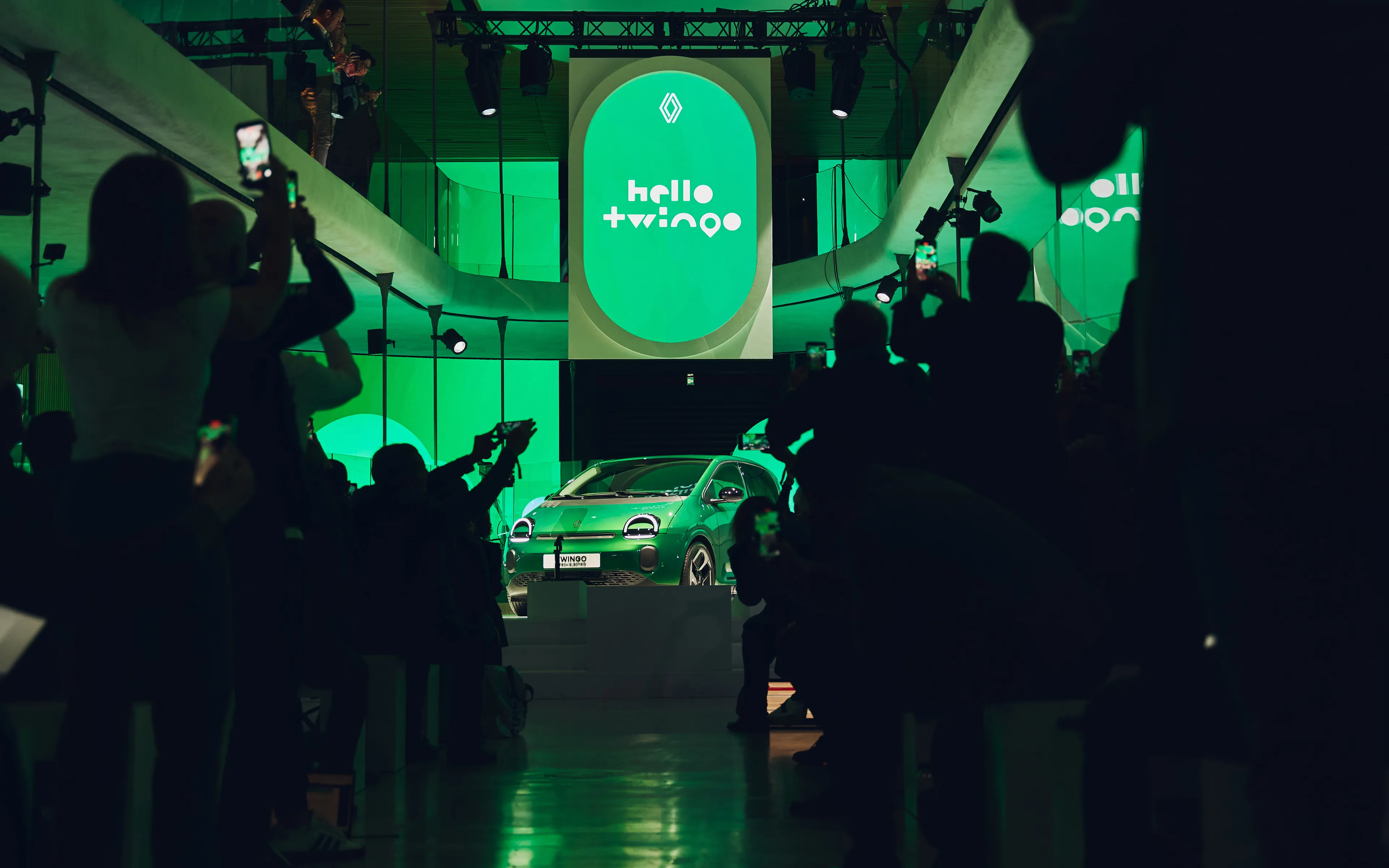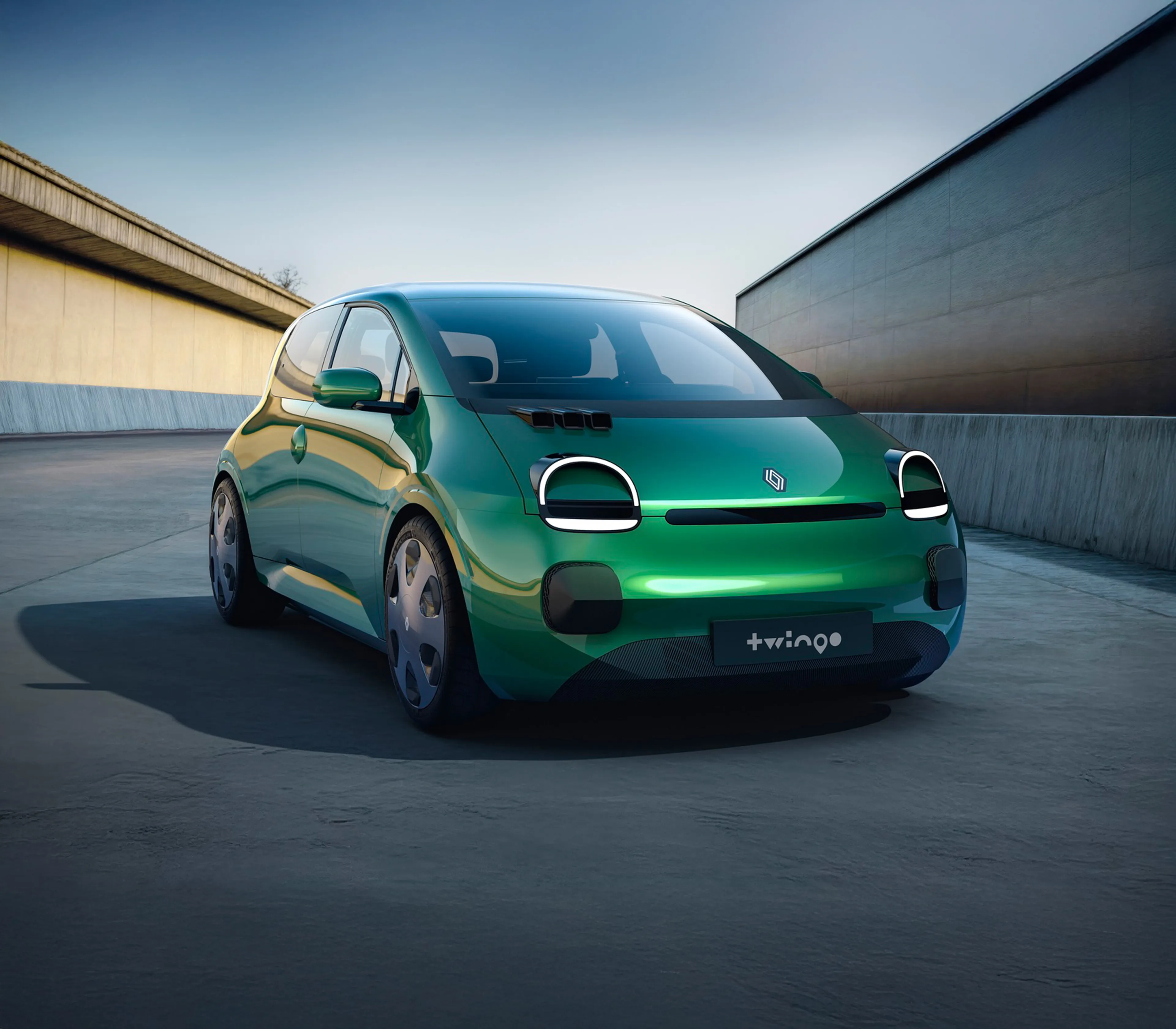Twingo E-Tech electric is designed to smile… and slice through the air
Published on
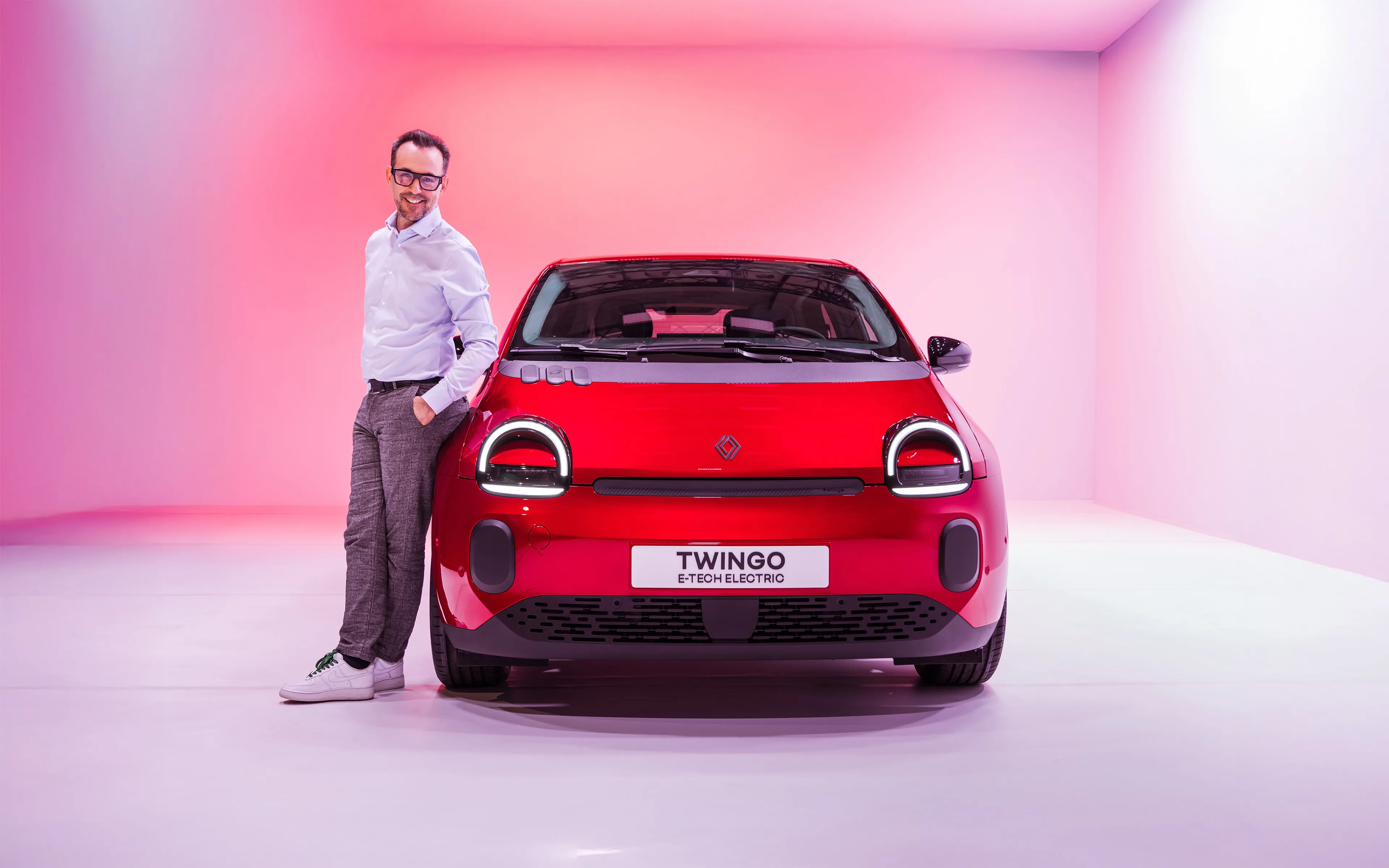
Round, mischievous, instantly recognizable: Twingo has never tried to blend into the crowd. And yet, its new generation boasts exemplary aerodynamics. How can a car so visually endearing achieve such energy efficiency? Balancing proud heritage with subtle innovations, the design of Renault Twingo E-Tech electric marks a return to essentials: a car that radiates joy while staying ahead of the curve.

‘Twingo has a cheerful little face, but it’s also a truly serious car’
Frédéric Aparici
Twingo Design project leader
Heir and rebel: the new Twingo is reborn without betraying its soul
For more than thirty years, Twingo has embodied a simple idea: an urban car can be joyful. In 1993, it already stood out as an optimistic UFO in a rather uniform automotive landscape. Three decades later, the new Twingo E-Tech electric builds on this heritage to create its own modernity: that of a 100% electric, compact, smart and affordable city car.
Frédéric Aparici, Twingo Design Project Leader, readily speaks of retro-futurism: ‘We didn’t try to copy the past, but to extend the spirit of the original Twingo.’ His teams’ work therefore consisted in redesigning the model’s iconic proportions: monobox silhouette, steeply raked windshield, wheels pushed out to all four corners of the body. The result: a compact, well-balanced car with very short overhangs and large-diameter wheels (640 mm, a record in the segment).
More than a question of aesthetics, this play on proportions creates a confident stance on the road, both stable and agile: ‘When you see it drive by, you immediately understand it’s a Twingo,’ says Frédéric. ‘It’s a car with charisma, one that catches the eye without overdoing it.’
Because yes, Twingo is above all a face, a ‘gaze’, a term dear to the design project leader: ‘I no longer talk about lighting, I talk about a gaze. The car is alive.’ This gaze is formed by two luminous half-circles underlined by a horizontal line, a signature instantly recognizable both day and night. In a single glance, the spirit of the first-generation Twingo reappears, modernized by full LED technology.
Every detail was crafted with one idea in mind: to spark spontaneous affection without ever drifting into gimmickry. The hood design, the cut of the parts around the headlights, or the horizontal line running along the windshield pillar, all are subtle echoes of the first generation, integrated into a contemporary interpretation on the new Twingo. ‘We wanted the lineage to be felt, even if you can’t quite explain why,’ Frédéric points out.
.
A little round car in the wind: aerodynamics according to the new Twingo
A ‘round’ car is rarely a good starting point for aerodynamic engineers. And yet, Twingo E-Tech electric boasts an excellent drag coefficient for a city car. A paradox? Not really.
‘Even at 50 km/h, a car moves through the air: it cuts through it, and the air slows it down,’ explains Frédéric Aparici. ‘So yes, we take aerodynamics seriously on Twingo!’ Even though the Twingo is designed primarily for the city, its efficiency also matters on roads and highways: at 130 km/h, every detail counts to preserve battery range.
The design and aerodynamics teams therefore worked hand in hand, seeking the best balance between form and airflow. The sloping hood, inherited from the 1993 model, is not just a nod to the past: it helps reduce the frontal area exposed to the air. The softened, elongated curves guide the airflow without creating turbulence. The design of the windshield pillars and the roof has been reworked to channel the wind, while improvements to the underbody ensure greater stability at higher speeds.
But it’s at the rear where the magic truly happens. The fins integrated into the rear lights play a decisive role: they extend the shoulder line and neatly guide the airflow, preventing turbulence behind the car. And that’s not all: the contour of the rear window, with its oblong shape, has also been designed to channel the flow of air. Its slightly pinched form, paired with the curvature of the tailgate, acts like an invisible guide that directs the outgoing airflow and reduces rear drag.
This design work achieves a rare ‘smoothing’ effect for a car in this category. ‘These details are essential,’ says Frédéric. ‘They’re discreet, but they change everything.’
The challenge was twofold: preserve the round, expressive silhouette that gives Twingo its charm, while achieving exemplary energy efficiency. A precise design challenge: the lines remain soft, but every detail has a purpose.
Renault’s engineers refer to it as functional design. Nothing was added for looks alone: every detail, every cut has a reason to exist. The subtle side skirts, the rear fins, the window contour, and the underbody edges all help reduce drag and gain valuable kilometers of range, reaching up to 263 km according to the WLTP standard.
In the end, Twingo proves that a ‘round’ aesthetic is not incompatible with efficiency, it simply requires a different way of thinking. It’s this tension between softness and rigor that makes it a unique car in its category.
Rational emotion: when form becomes function
True to Renault’s ‘cars for living’ philosophy, Twingo E-Tech electric combines aesthetics and functionality: a design that is as useful as it is appealing.
Its compact profile and forward-set windshield maximize interior space without compromising the overall lines. The short hood improves urban visibility. And if the car seems to be “smiling,” it’s not just a charming touch: the smoothly curved front end helps direct airflow toward the sides.
Inside, the same logic applies: cheerfulness and ergonomics go hand in hand. The materials are light, the shapes simple, the colors vibrant. The 10-inch central screen, with graphics crafted by the designers, presents a visual world inspired by the playful spirit of the first Twingo.
Frédéric Aparici insists: ‘We wanted a car that is serious in its engineering, but joyful in its expression.’ This philosophy is visible in the coherence between front and rear, in the lightness of the design and the precision of its execution. Nothing is superfluous: even the “smile” of the front end contributes to overall efficiency.
In short, Twingo E-Tech electric reconciles two worlds the industry sometimes opposes: emotion and reason. It shows that engineering can have a sense of humor, and that design can be an exact science.
In tune with the times
Twingo E-Tech electric speaks truth, with its full shapes and honest volumes. It carries on a mindset: that of an optimistic, practical and accessible car that embraces its difference.
But beneath its gentle appearance, the city car hides meticulous work: every line, every curve, every angle was designed to make the car more streamlined, more efficient, more modern. Twingo doesn’t just move through the air: it masters it and turns it into an ally. A roundness that cuts straight ahead and a smile that, clearly, hasn’t aged a bit.
.
FAQ Twingo E-Tech electric
Why does the new Twingo keep its rounded shapes?
Because this silhouette is part of its DNA. The designers wanted to preserve the joyful, familiar personality of the original model while giving it more modern and dynamic proportions.
Through meticulous work on the hood, the pillars, the underbody and the overall volumes, Twingo E-Tech electric combines soft shapes with efficient airflow. Its design reduces drag without giving up its charm.
Above all through its spirit: an accessible, joyful, clever car. The visual cues from 1993 are still present (expressive “face,” compact proportions, interior modularity), but reinterpreted with today’s technologies.
